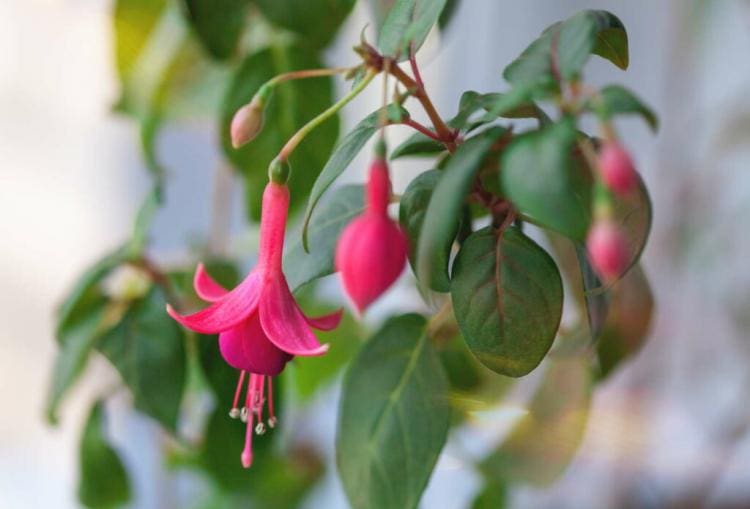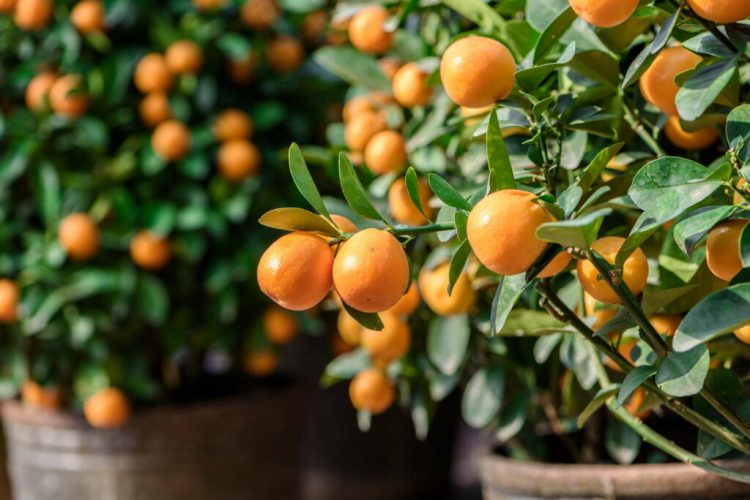Fuchsia Cut: Topiary And Winter Cut
In optimal conditions, fuchsias grow quickly in an uncontrolled manner. A skillful cut mediates between lush flowering and neat growth.
Fuchsia (Fuchsia) form unique flowers that dance on windy summer evenings like small forest fairies in a pink dress by the green of the leaves. These imaginative plants can grace your garden as green companions for many years. But the magical flowers only form on new shoots in the same year. So that your fuchsia shines in full bloom every year and does not become lignified and faded, pruning is essential. To ideally take care of your fuchsias between cuts, here is everything you need to know about growing these exotic species.
When to cut fuchsias?
Table of Contents
Fuchsias are cut back in autumn before the first frost and in spring after overwintering as soon as budding begins.
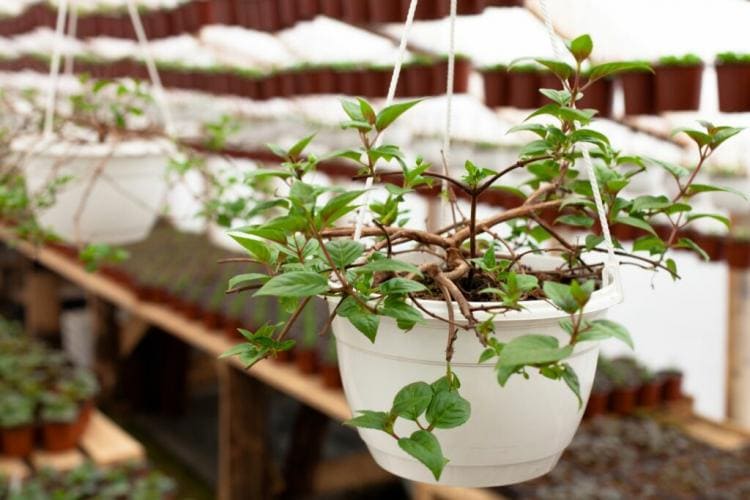
Proper topiary is only done in autumn when fuchsias overwinter in a very cool and dark place. Otherwise, it is only roughly pre-cut once in autumn. Around a third of the annual growth is cut back and leaves and dead flowers that are still present are removed. Exceptions are small-leaved fuchsias such as F. microphyll. These must not be defoliated before wintering. When pruning, don’t be afraid to cut back the shoots that have grown hard over the year. Because annual shoots continue to grow in fuchsias, but they no longer form flowers. Annual pruning is therefore essential for a fuchsia that should keep its youthful flower dress.
When pruning, leave at least one or two eyes per shoot. If the shoots are already branched, the interface is behind the first eye after the last branch. The incision is made about 2 cm behind the eye. Whether you use a knife or scissors is up to you. The selected tool only has to be sharp and clean. Otherwise, the wood will be crushed and diseases can be transmitted.
Then let the interface dry well. Otherwise, the still weeping interfaces offer ideal entry points for fungal infections. It also removes dead, very thin, and inward-growing branches. Unwanted drives are cut off in front of the first eye – this is how the drive withers away. Apart from the aesthetics, this also increases the ventilation within the plant. Diseased shoots are shortened into healthy wood.
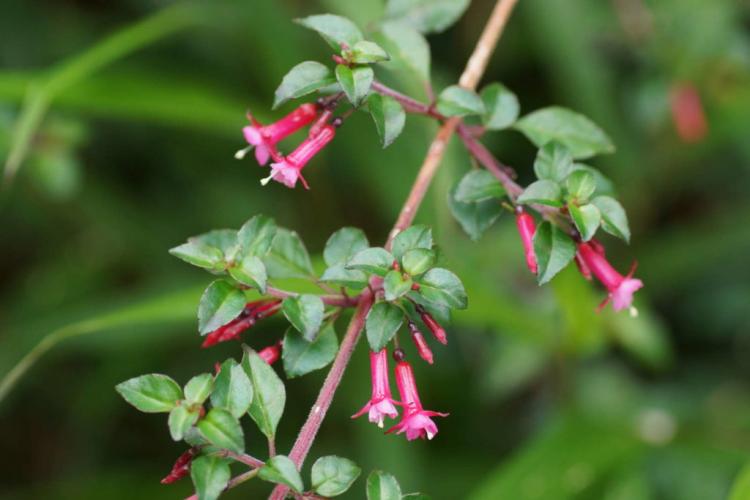
The cut can also be left out. Because the fresh interfaces offer entry points for warehouse pests and diseases. However, the plants can be stored better in winter storage and the air can circulate better, which in turn reduces the susceptibility to damage. Young fuchsias, which are cultivated light and above 10 ° C all year round, can also be cut into shape during winter.
After the rough autumn pruning, the exotic fuchsias go to the protected winter quarters. The ideal quarters to overwinter fuchsias is cool (at least 2 ° C), dark and dry. There are also hardy fuchsia species that can be overwintered in the bed with proper winter protection.
Note: The cut shoots do not have to go into organic waste. Instead, you can give the shoots a new life as a cutting and give yourself a new fuchsia. Everything about the propagation of fuchsias via cuttings can be found here.
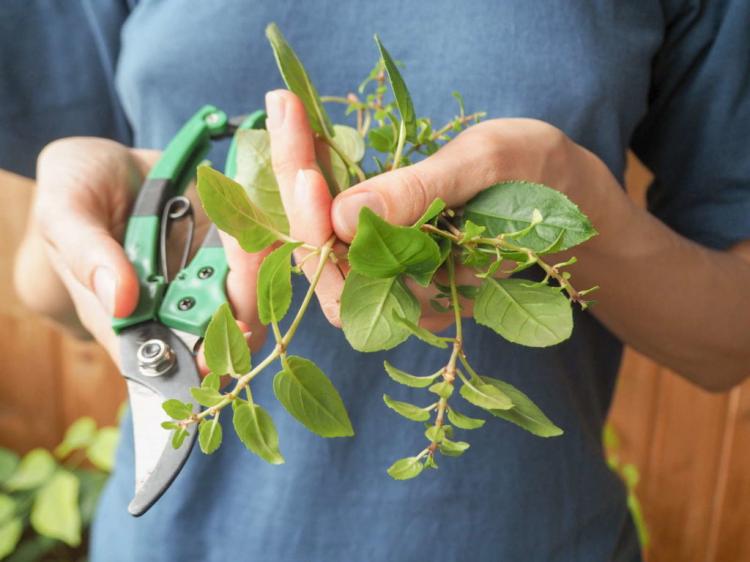
Bright fuchsias and above 12 ° C in winter, for example, are overwintered in a greenhouse or a light cellar, only get their actual shape after wintering in spring. However, the cut in spring is also recommended for sensitive and very woody varieties. The following applies: the stronger the pruning was before winter, the less there is still to be pruning in spring. Overall, you should cut back about one to two-thirds of the annual growth – including the autumn pruning.
Cut hanging fuchsia varieties
With hanging fuchsia varieties, one eye per shoot is left. Cut the shoots so that they protrude about 2 cm over the edge of the pot. If the shoots are not cut back short enough, the fuchsia will blotch from the inside.
Cut standing fuchsia varieties
In the case of standing varieties, the desired shape is brought into the plants by pruning. Orientate yourself with the shape and thus the interface finding on the thick main shoots. These form the basic structure of your fuchsia and thus significantly determine the later shape. If you want to achieve a kinked main branch, for example, this will be cut off after a strong side shoot. Opposite side shoots are removed so that the main branch continues in a kink through the uncut side shoot. Depending on the natural growth habit and the chosen cut, fuchsias can achieve slim, tall, and rounded shapes.
Cutting fuchsias: special shapes
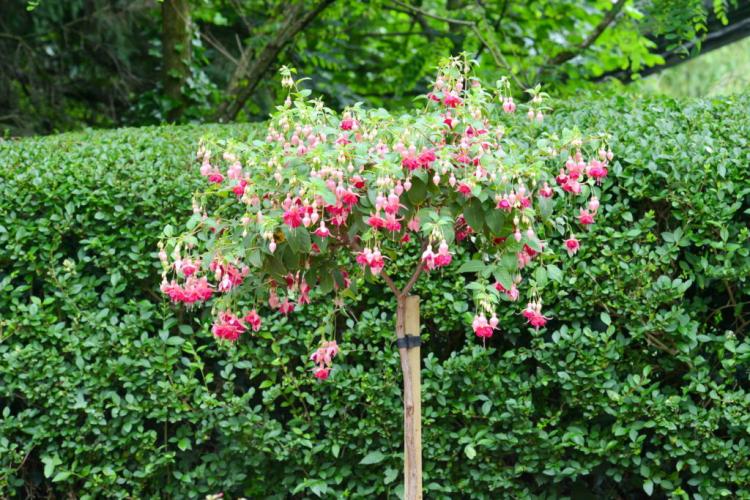
Your fuchsia will turn into a nicely branched, full bush if you shorten all of last year’s leading shoots by one to two-thirds. The side shoots are shortened to one or two pairs of eyes.
If you want to raise your fuchsia to a pretty high trunk, the scissors should be swung as follows:
- All unbranched shoots are shortened to one or two eyes
- Thin, branched shoots are removed
- Leave the leaves on the trunk
- The crown can be shaped by removing the point
By removing thin twigs, you ensure a nice, air-permeable growth. The plant is less prone to fungal diseases and leaves that further inside get enough sun.
When cutting into a column, the main lateral shoots of the fuchsia are shortened so that a column shape of the desired size is created. The shoots that emerge from the main lateral shoots are cut back to one or two pairs of eyes.
In the case of radical pruning to give bald, badly grown fuchsias a new shine, old wood can also be cut. However, leave at least one pair of eyes per shoot so that the shoot can sprout again.
The fuchsia is watered thoroughly once after the spring cut. After that, there is only sparse watering until the new shoots.
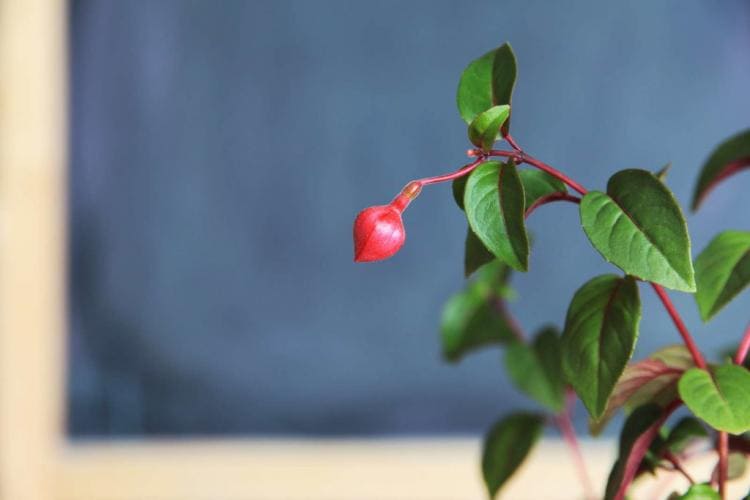
Repot fuchsias
Apart from pruning, spring is also particularly suitable for repotting your fuchsias. The main thing is to replace the earth that has been used up. When repotting fuchsias, do the following:
- Remove the plant from the pot
- Carefully remove soil with your fingers
- Remove injured, diseased and dead roots
- Rinse off soil residues under running water
- Repot the fuchsia in the same pot with fresh soil
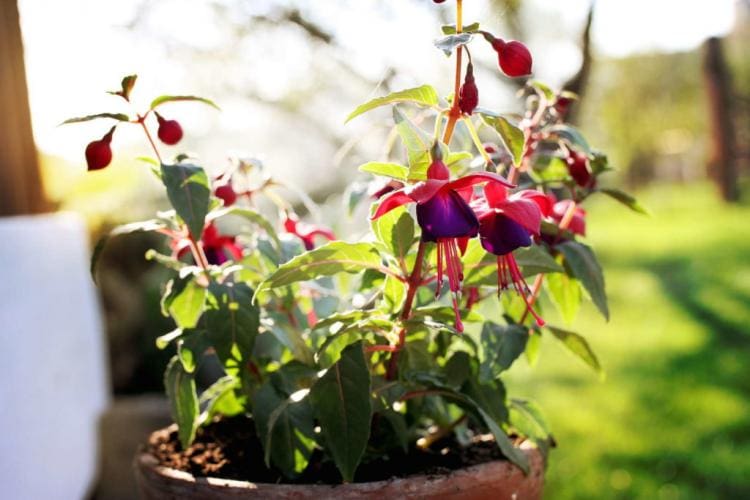
Only when your fuchsia has grown so big that the old pot is too small will it be repotted into a larger one.
Note: If the new shoots are softly pitted after the formation of three pairs of leaves, your fuchsias will grow particularly branched and flowering. The soft tip of the shoot is cut off above the last eye and the shoot continues to branch out. This can be repeated over and over if desired, but delays flowering considerably each time.
